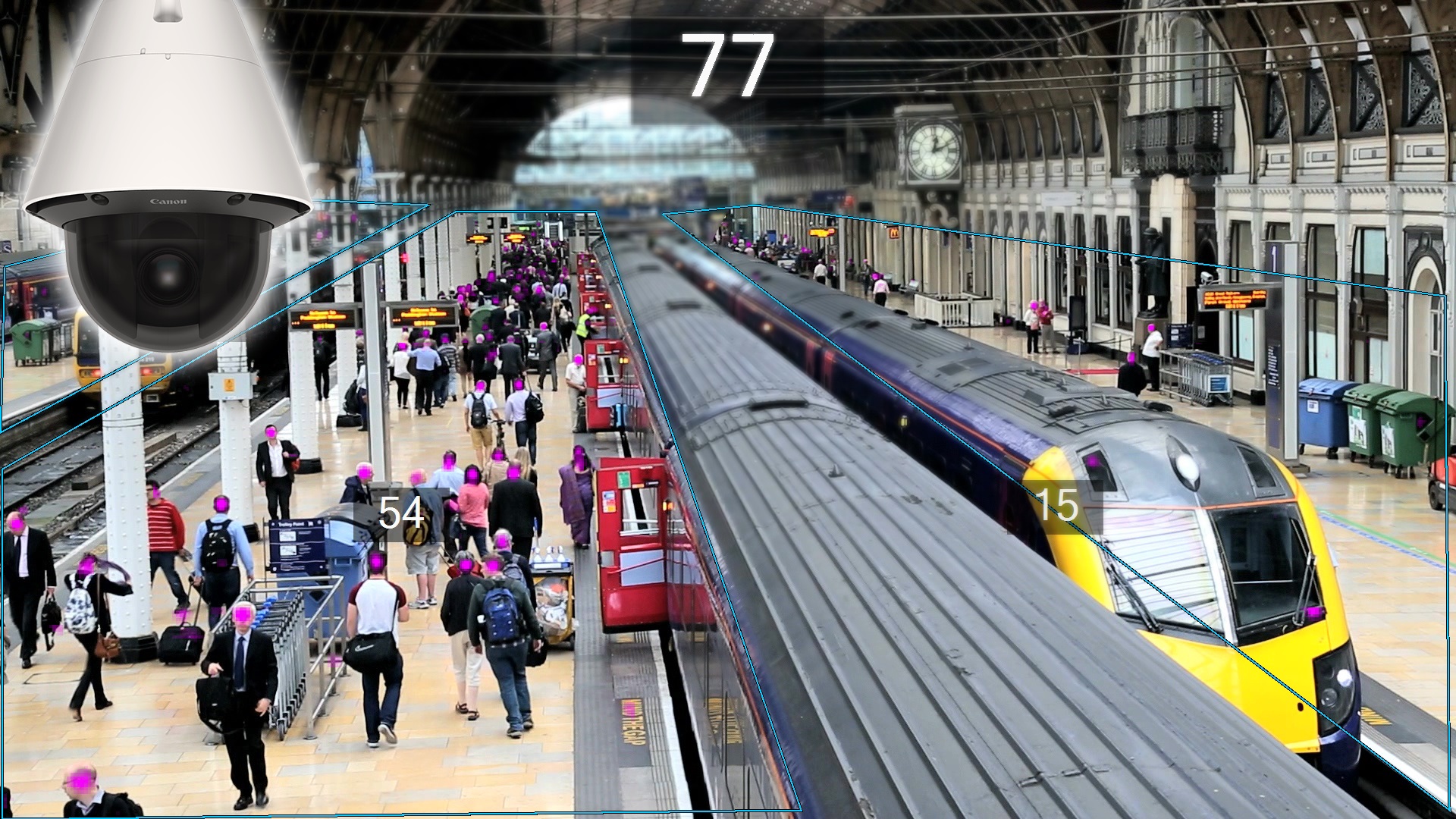

Canon network cameras combine optical technologies cultivated through the company's long history with the latest in network communication technologies. Combining these with AI-powered video content analysis technology, the company is pursuing new possibilities for network visual solutions.
2019/7/11Featured Technology
#Pioneering Technology#Camera
*In order to view videos, it is necessary to consent to the use of cookies by our website. If the videos are not displayed, please click the "Cookie Settings" and accept cookies.
Canon’s video content analysis software “People Counter” features the people counting technology which can count anywhere from a few individuals to up to approximately 1,500 people from video captured by network cameras. Using Canon’s “people detection technology” and “real-time tracking technology”, video content analysis technologies can estimate the number of people in a video with speed and precision. This valuable information can be used in such marketing applications as integrated POS systems*1, and for counting visitors in large-scale facilities.
In order to accurately count individuals within a crowd of people, input data for detection contains not only faces, but also other types of human model data including completely visible as well as partially obscured bodies. Additionally, video content analysis technology is able to detect edge features to recognize human silhouettes and color features to distinguish them from objects resembling a human body, thereby enhancing accuracy.
After detecting a person, video content analysis technology anticipates the subject’s movements and narrows the focus of identification processing to the predicted destination in subsequent frames. Simultaneous processing of people detection on the entire screen and people tracking focusing on the predicted location enables both high processing speed and precision. This allows real-time processing of high-resolution video or video showing crowds.
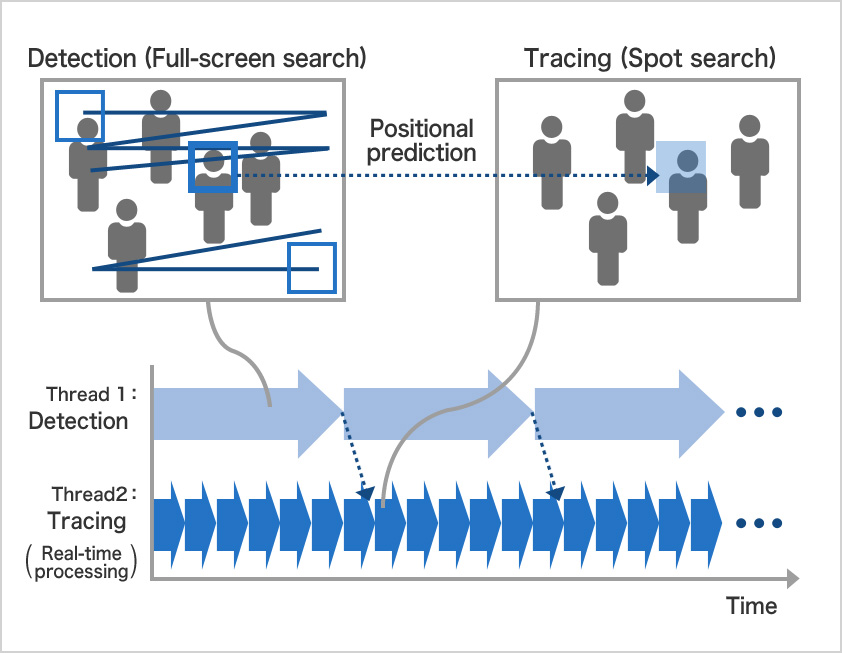
*In order to view videos, it is necessary to consent to the use of cookies by our website. If the videos are not displayed, please click the "Cookie Settings" and accept cookies.
To count people in crowds, Canon video content analysis technologies implement deep learning—a form of artificial intelligence—for real-time estimation of people counts in dense crowds. These technologies not only enable the effective placement and management of security personnel in public locations or urban environments, but can also assist in directing sizeable crowds in large-scale facilities, event venues and even cases of emergency or natural disasters. Applications can be extended to measuring the traffic of customers in retail stores or verifying the effectiveness of digital signage and advertisements.
Video data from network cameras is analyzed by a neural network—a mathematical model that recreates certain functions of the human brain—in order to estimate the number of people in a crowd. By studying multiple crowd patterns, video content analysis technologies can estimate the number of people in a group, even in high-congestion scenes where people overlap.
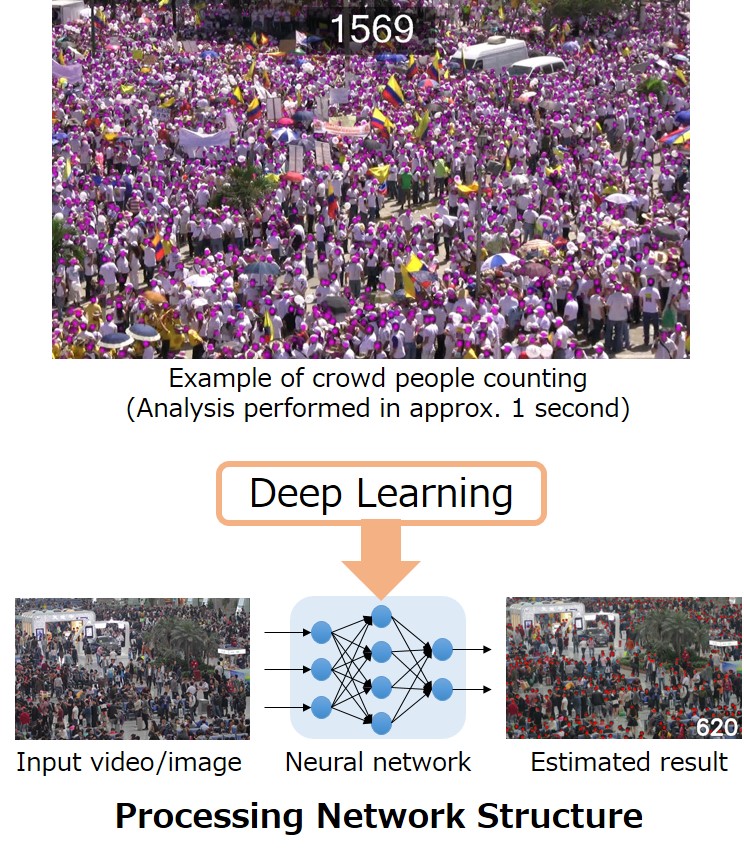
*In order to view videos, it is necessary to consent to the use of cookies by our website. If the videos are not displayed, please click the "Cookie Settings" and accept cookies.
Canon’s silhouetting technology is driven by software that unite monitoring functionality with privacy protection. Video footage from network cameras may contain numerous personal identifiers, which raises privacy concerns. However, by silhouetting human forms and masking those defining characteristics, Canon’s technologies help protect individuals’ privacy and thereby open up a variety of other possibilities for network cameras.
For example, silhouetting technology can help users monitor crowding at such public facilities as train stations, shopping malls and restaurants without encroaching on customers’ privacy and use this information to improve convenience and realize a safer and more secure society.
The process of silhouetting a video involves creating a “difference image,” which highlights the differences between the input video, and a predefined “control image.” The difference image is then synthesized with a background image to render the moving object as silhouette.
Canon’s technologies also update the control image on a regular basis. Regularly updating the control image helps minimize the impact of such subtle changes as shifts in the positioning of desks and chairs or changes in lighting conditions. This in turn enables detection of the target moving objects with greater precision.
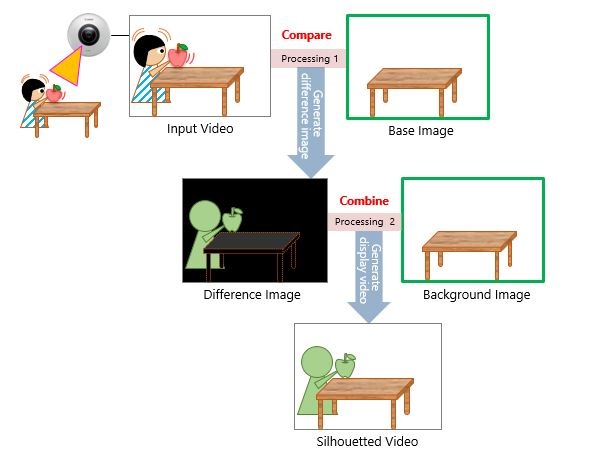
For outdoor applications, network cameras are susceptible to the effects of raindrops, dirt and dust. Environmental residue can be especially problematic, as water or grime accumulating on the surface of a camera lens can reduce visibility.
Network cameras treated with Canon’s proprietary hydrophilic*2 coating are better protected against such effects. In addition to quickly repelling raindrops in inclement weather, the residue on the lens is more easily washed away by the rain, thereby improving visibility during and after the rain.
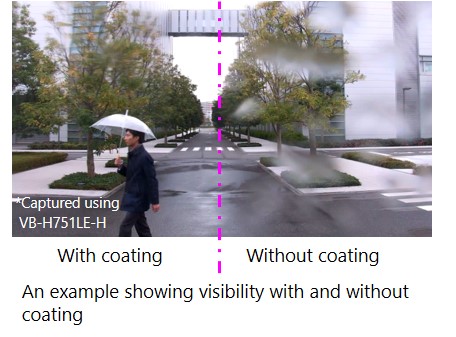
Conventional network cameras tend to experience reduced visibility in the rain due to droplets adhering to lens surfaces, which causes diffuse reflections. However, when rain hits a network camera treated with a hydrophilic coating, the droplets form a thin, uniform layer across the coated lens surface. This minimizes diffuse reflections, which helps maintain visibility during and after inclement weather.
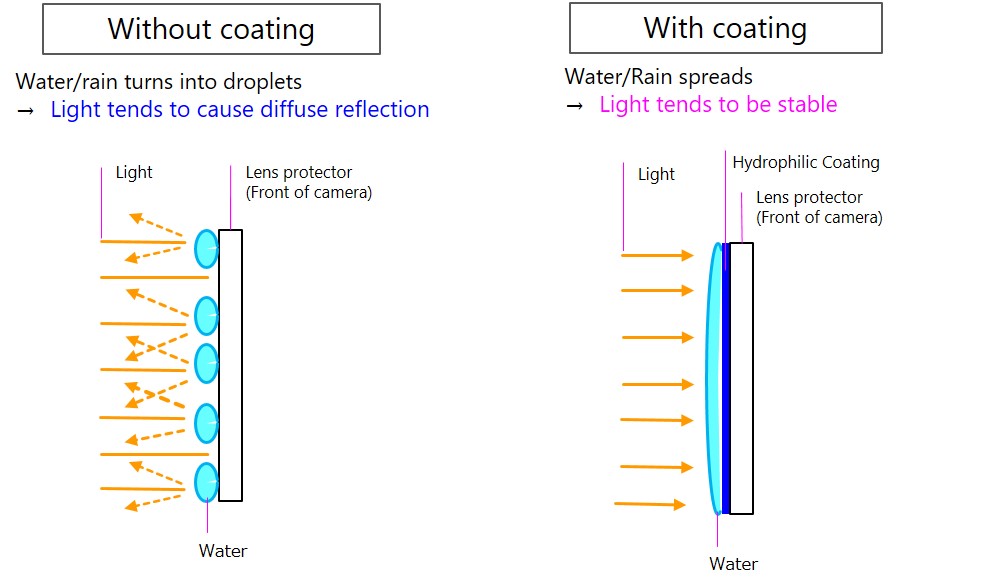
On a lens with hydrophilic coating, rain spreads quickly to form a thin, even layer under dirt, dust, or grime and detach the accumulation from the surface. As the rain washes away, these accumulations are washed away with it.
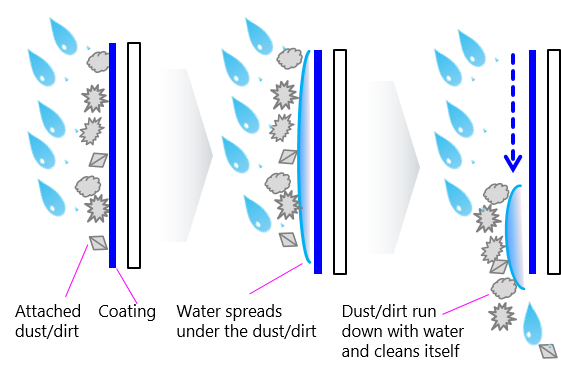
Canon develops large-aperture zoom lenses that allow users to utilize the incredible light-gathering capabilities of an f/2.4 aperture, even at the telephoto end. Such performance makes possible the capture of clear, vivid and low-noise color images of subjects as far as 100 meters away. Used in conjunction with Canon video content analysis solutions, these lenses are ideal for nighttime security applications in such environments as large parking lots.
Ultra-low dispersion (UD) lens technologies keep refraction and dispersion to a minimum and help maintain high image quality by limiting increases in aberrations that are often noticeable when using large-aperture lenses.
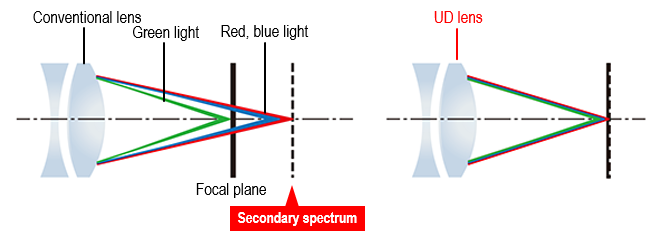
Canon’s infrared reflection reduction coating help limit ghosting, thereby improving near-infrared transmittance for better low-light performance in night-time operation.
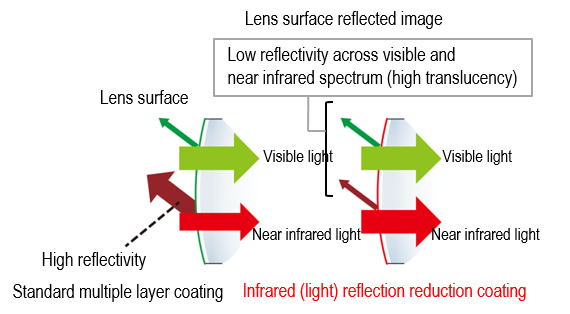
Canon S Series network cameras are ideal for installations in such locations as retail outlets due to their compact bodies that discreetly blend in with their surroundings. Despite their compact size, these devices achieve impressive performance, including 20-megapixel resolution, 3.5x optical zoom, autofocus, superb low-light performance and electric pan, tilt and zoom (PTZ) capabilities.
By utilizing high-precision aspherical lenses and glass materials with a high refractive index, the S Series reduces the number of necessary lenses and makes them small enough to fit within an ultra-compact dome.
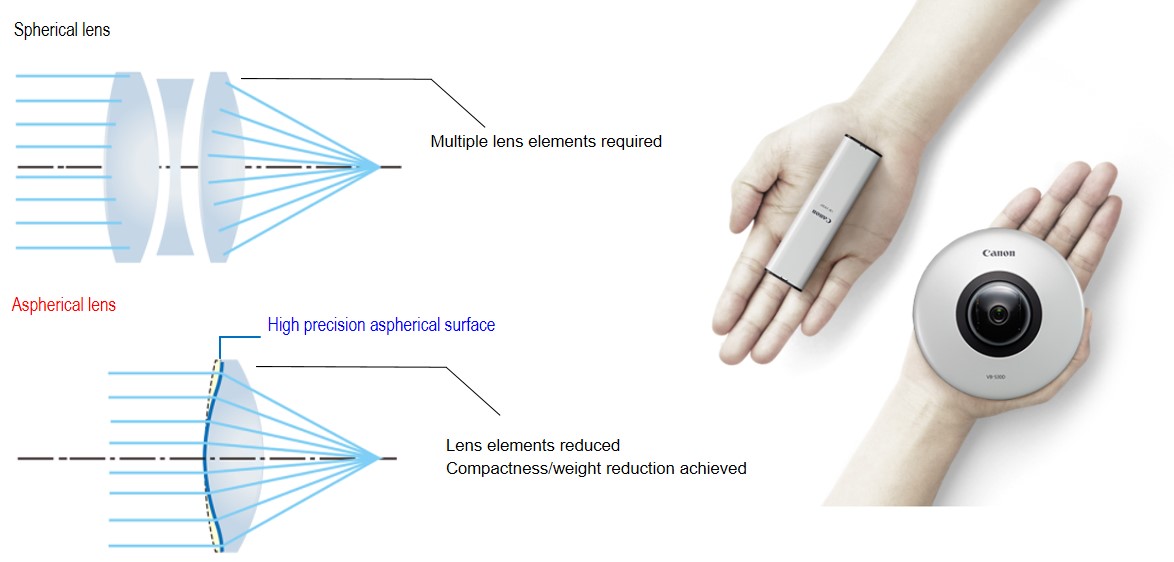
In the circuit board design of S Series network cameras, taller electronic components have been mounted inside the dome, while shorter components are housed on the casing side, resulting in a slimmer product design. The concentrated design for the tilt drive mechanism (for vertical camera movement) near the side of the lens unit prevents interference with cables that turn in response to panning (horizontal movement). Together, such careful placement of components, results in a compact and efficient design.
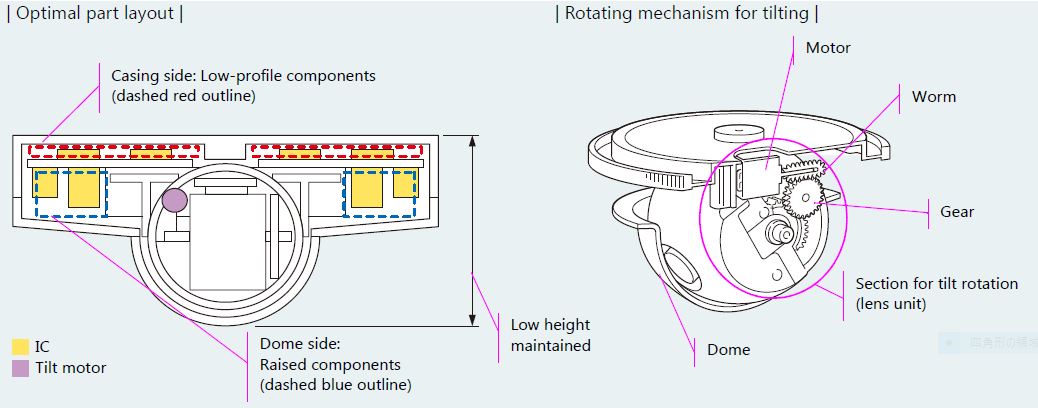
Network cameras can be installed in a wide variety of indoor and outdoor environments, and therefore must be equipped to handle the conditions in which they operate. In outdoor monitoring applications, for example, network cameras must be able to operate 24/7 within a wide range of temperatures. Capable of operating in temperatures ranging from -50 ℃ to 55 ℃, Canon’s outdoor-type network cameras are designed to perform reliably in a wide range of outdoor environments.
In order to continue operating as temperatures change throughout the day, Canon outdoor network cameras employ a sunshade with a special dual-layer structure of die-cast aluminum and resin mold. In high temperatures, air from a cooling fan flows through the space between the outer aluminum layer and inner mold layer while the vent on the sunshade releases excess heat. When temperatures are low, a heating unit warms the inner side of the mold layer and keeps heat from escaping due to the design’s insulating properties.
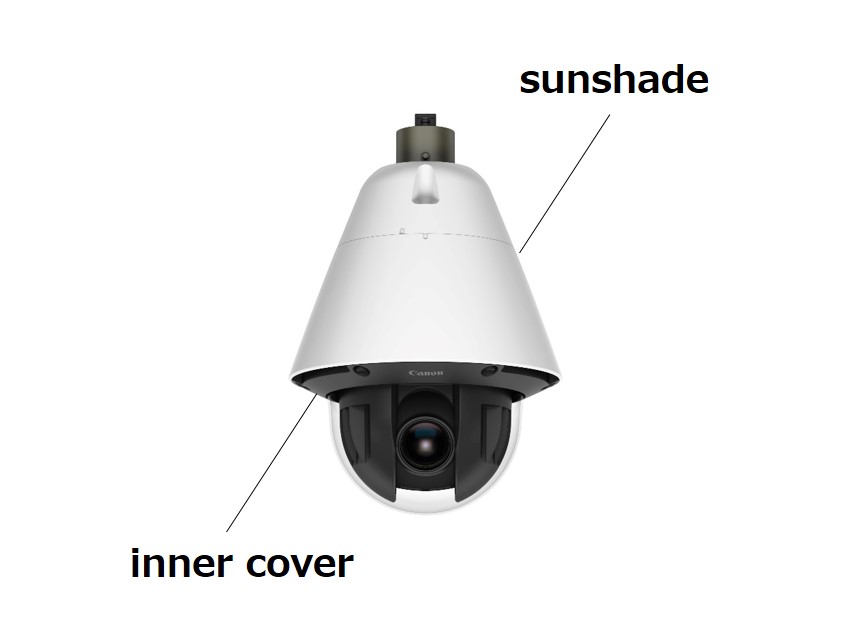
The design of Canon’s network cameras also prevents fogging by letting air continuously circulate through the device’s internal structure and even sends air to the dome, much like a pair of ski goggles. This achievement is the result of experimenting with such factors as how much warm air the heater unit should emit and how to direct the moving air into the space between the dome and the inner cover, ultimately realizing a design that prevents fogging throughout the dome.
